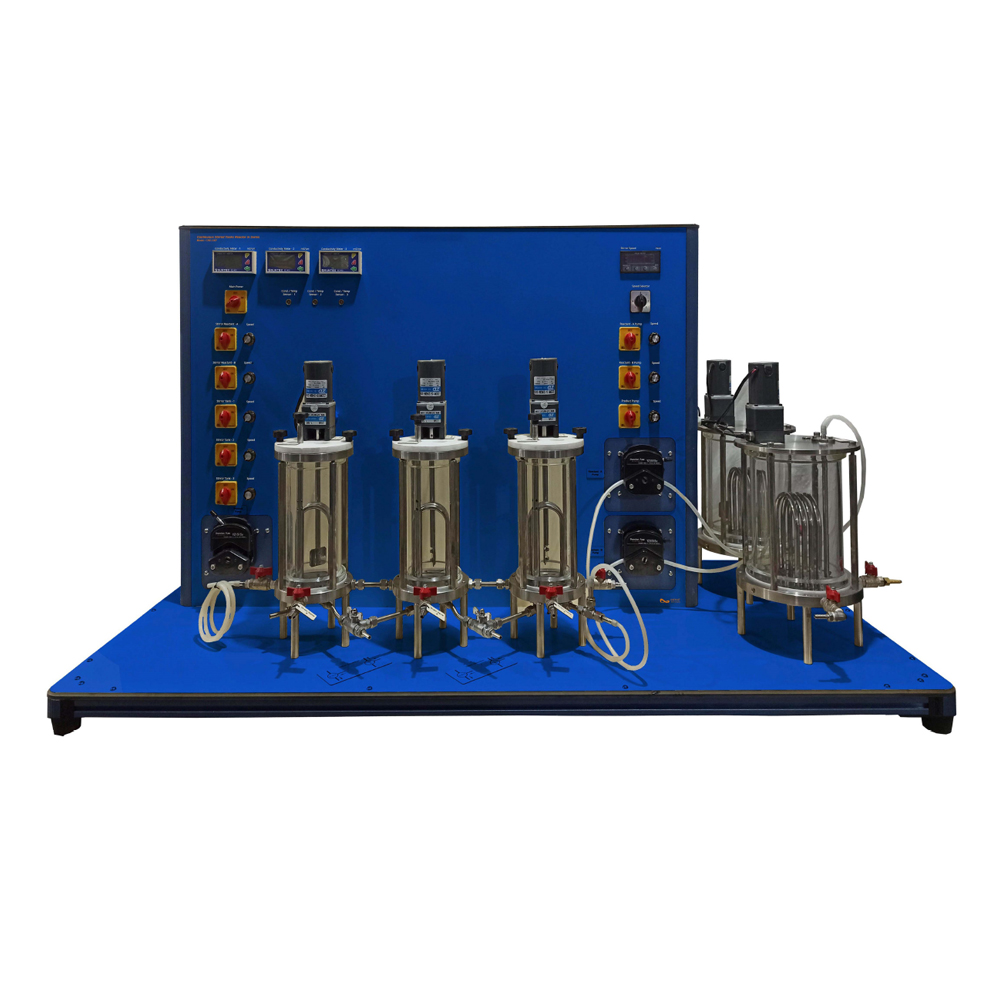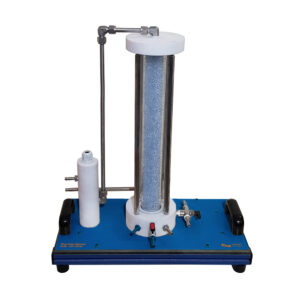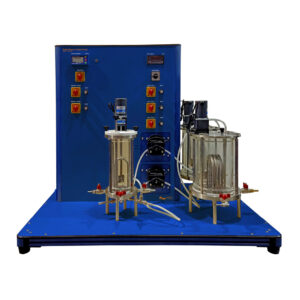Stirred tanks in series are continuous stirred tank reactors that are connected in series, as the name implies. Compared to a single stirred tank reactor, they provide a higher conversion. Stirred tanks in series allow for variable process control because each individual reactor’s temperature and retention duration may be customized. The gadget series that enables research with various reactor types includes the CRE-3307. Stirred tank behavior and operation can be studied sequentially. The apparatus includes a heating water circuit in addition to all required connections, pumps, reactant and product tanks, and tanks for reactants. The reactor may be quickly and easily connected to the supply unit using quick-release connections.
Stirred tanks in series are continuous stirred tank reactors that are connected in series, as the name implies. Compared to a single stirred tank reactor, they provide a higher conversion. Stirred tanks in series allow for variable process control because each individual reactor’s temperature and retention duration may be customized. This equipment series that enables research with various reactor types includes the CRE-3307. Stirred tank behavior and operation can be studied sequentially. The apparatus includes a heating water circuit in addition to all required connections, pumps, reactant and product tanks, and tanks for reactants. The reactor may be quickly and easily connected to the supply unit using quickrelease connections. Conductivity and temperature are digitally displayed.
Technical data
3 reactors
- Outer diameter: each 110mm
- Inside diameter: each 100mm
- Height: each 250mm
- Reactor capacity: each approx. 1950mL/min
- Adjustable volume: 1500~1950mL
- Material: boro 3.3 glass
Stirrer
- Speed: approx. 300min-1
- Quantity: 5
Peristaltic pump for reactants
- Quantity: 2
- Max. flow rate: approx. 500mL/min
Peristaltic pump for products
- Max. flow rate: approx. 500mL/min
Water pump
- Max. flow rate: 10L/min
- Max. head: 10m
- Power consumption: 120W
Heater
- Power consumption: 3000W
Tanks
- Reactants: 2x 3L
- Product: 5L
- Heating water: 8L
Measuring ranges
- Conductivity: 0~200mS/cm
- Temperature: 0~60°C
Software: CRE-3307SW (optional)
DAQ software specially designed in National Instrument™, LABVIEW™ environment to measure and calculate the results of apparatus. The software is optional and while using software a set of electronic sensors are included. Software can be run with any Windows™ environment.




